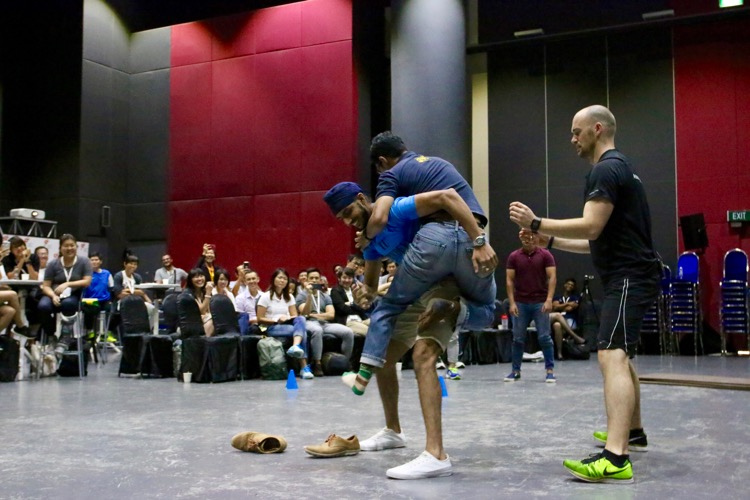By Gino Ng
How do you choose your running shoes? I’ve been asked that question many times over. I’ve even compiled a shoe list regularly over the years since the ’90s and many other physios and health professionals have conveniently taken out my name and passed the list off as their own.
For years, podiatrists, coaches and salesmen have looked at your foot type (to see if you have a normal, low or high arch) and then recommended that you have stability, motion control and cushioned shoes respectively. The rationale being that if you have high arches, you do not pronate enough and need softer, well cushioned shoes. If you have low arches, you tend to overpronate and need sturdy motion control shoes to control that overpronation. Runners with normal arches need neutral shoes and are prescribed stability shoes. This method is deeply rooted in athletic circles and widely accepted.
This is exactly what the US military did in terms in handing out shoes to their recruits as injuries were rampant during basic military training. Military authorities hoped that injury rates would drop by ensuring their recruits were fitted with the correct shoes according to their foot type.
In order to determine whether fitting correct shoes helped in lowering injury rates, military researchers found no scientific literature in support of what they were doing and decided to do their own research.
And you know what? A study published in the American Journal of Sports medicine found almost no correlation at all between wearing proper running shoes and avoiding injuries. Injury rates were actually highest amongst soldiers who had received shoes fitted according to their foot types. Wearing the so called “correct” shoes for their type of feet had actually increased the recruits’ chances of getting injured.
If you have been following our blog, you would have read that Sports Solutions first wrote about this last year when researchers in another published article in the British Journal of Sports Medicine concluded that sports medicine specialists should stop recommending running shoes based on a person’s foot type as there was no evidence supporting it. (Please have a look at one of our more popular posts last year – Do high-tech running shoes work?).
And just in case you decided that published studies on military recruits were of a lower quality, another study done on experienced runners was published more recently in support of the military subjects paper. In this study, 81 runners were classified according to their foot postures (a more detailed measure of foot type than just arch shape). Half the runners received shoes appropriate for their feet as described earlier (overpronators had motion control and so on), while the rest of the runners received their shoes randomly.
All the women embarked on a 13-week half marathon training program. How did they fare? Nearly a third of the women had to miss some training days because of pain, with a majority of the injured runners wearing (yes, you guessed correctly) shoes specifically designed for their foot postures. What is more, motion control shoes were the shoes across the board that “caused” the most injuries.
Now in theory, overpronators should benefit from motion control shoes to limit their overpronation. However, these runners who overpronated actually complained of pain and missed training after wearing them as did a number of runners with normal feet and every single underpronating (or high arched) runner randomly assigned to a pair of motion control shoes.
This is despite that fact that motion control shoes do limit over pronation as numerous biomechanical studies of runners running on treadmills have repeatedly proved that runners who wear motion control shoes have significantly reduced pronation.
There you go, not quite what you may expect I imagine.
References
*Knapik JJ, Trone DW, Swedler DI et al (2010). Injury Reduction Effectiveness Of Assigning Running Shoes Based On Plantar Shape In Marine Corps Basic Training. American Journal of Sports Medicine published online June 24, 2010.
Richards CE, Magnin, PJ and Callister R (2009). Is Your Prescription Of Distance Running Shoes Evidenced Based. British Journal of Sports Medicine. 43(3) : 159-162.
About Gino Ng
Gino is a former two-time national triathlete champion and runs Sports Solutions. He previously worked as a senior sports physiotherapist at the Singapore Sports Council (SSC) from 1999-2009. He graduated with a double masters in Musculoskeletal and Sports Physiotherapy from the University of South Australia on an SSC sponsorship.
His special interests are in the treatment of articular cartilage injuries having done research in the area whilst undergoing his postgraduate training. He specializes in treating sports injuries, as well as devising sports rehabilitation programmes after reconstructive surgeries to the shoulder, knee and ankle joints.











Leave A Comment